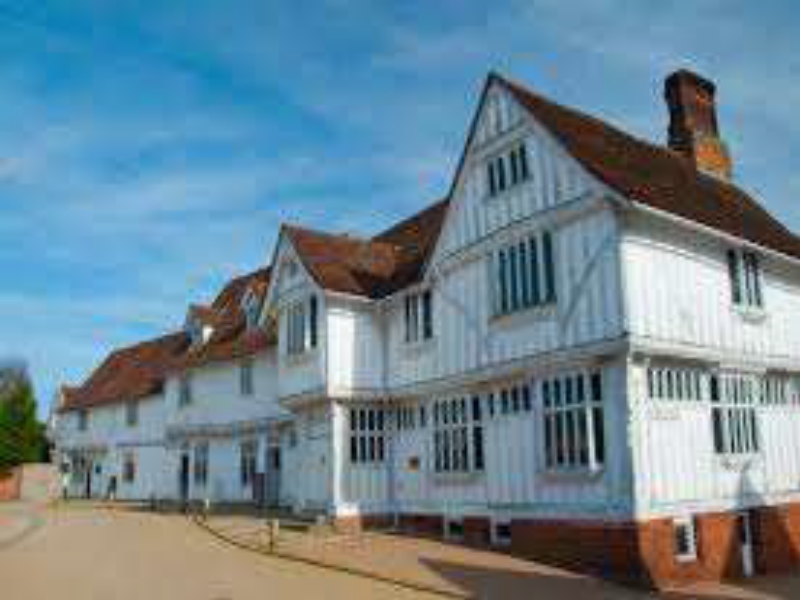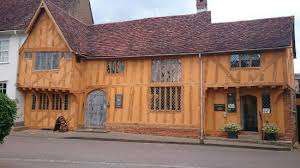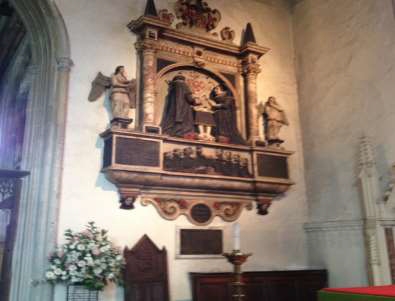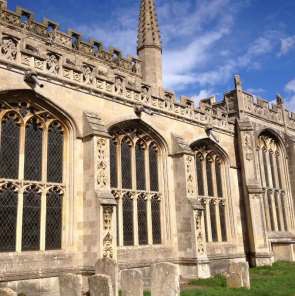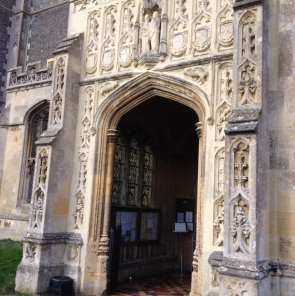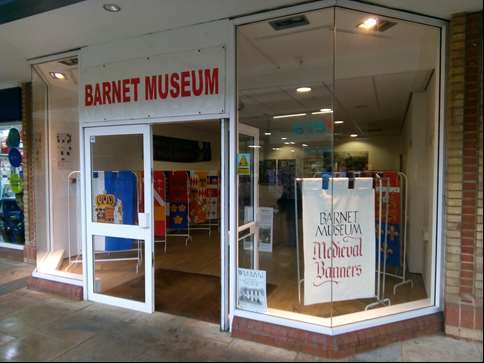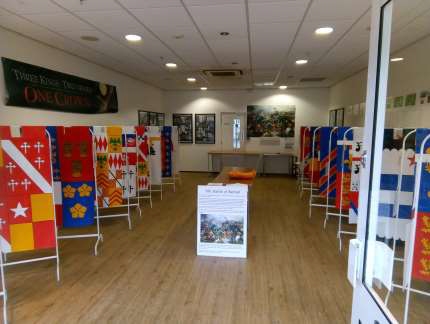Number 577 APRIL 2019 Edited by Sue Willetts
HADAS DIARY – LECTURE AND EVENTS PROGRAMME 2019
Tuesday 9th April 2019. The CITiZAN Project by Project Leader Gustav Milne
CITiZAN stands for the Coastal and Intertidal Zone Archaeological Network, a national project to
highlight the threat to a wealth of coastal and estuarine sites, most of which have no statutory
protection. The range of archaeological features encompass a long time span – from prehistoric
forests and settlements to Roman forts and villas to 19th-century ship-breaking yards full of
abandoned boats, barges and ships, many of which are of considerable local and national
significance. This information has been taken from their website
Gustav began working in archaeology in the City of London in the 1970s, gaining expertise in the
excavation of waterfront sites along the Thames. He has worked on a wide range of sites, from
Roman and Saxon to Medieval, including the site of the Roman London Bridge. He has been a
lecturer at UCL since 1991, he founded the Thames Archaeological Survey in 1993 and the Thames
Discovery Programme in 2008. He has wide experience in nautical archaeology, having worked on
several recording projects including a medieval ship in Sandwich, Kent, a wrecked Elizabethan
merchantman in the Thames estuary, and the launch site for Brunel’s SS Great Eastern in Millwall.
Tuesday 14th May 2019. 50 years of recording London’s Industrial Heritage by Professor David
Perrett
Tuesday 11th June 2019. ANNUAL GENERAL MEETING. It is hoped that there will be a talk –
details in the next newsletter which will include, or have attached, the papers for the AGM.
HADAS 2019 Long Trip. Monday 23rd to Friday 27th September 2019
We have booked the hotel for our long trip in 2019. Details will follow in due course.
The hotel is: Best Western Aberavon Beach Hotel, Aberavon Beach, Port Talbot, SA12 6QP.
Tuesday 8th October 2019: From Crosse & Blackwell to Crossrail – MOLA excavations at
Tottenham Court Road 2009–10 by Lyn Blackmore.
Tuesday 12th November 2019: Shene and Syon: a royal and monastic landscape revealed by
Bob Cowie.
Lectures are held at Stephens House & Gardens (Avenue House), 17 East End Road, Finchley, N3
3QE, and start promptly at 8 pm, with coffee/tea afterwards. Non-members admission: £2; Buses
13, 125, 143, 326 & 460 pass nearby and Finchley Central station (Northern Line), is a 5-10
minute walk away.
Lost and Found: The Rediscovery of Roman London. Lecture by John Clark
Report on March Lecture by Andy Simpson
A well-attended lecture with some 36 HADAS members and friends present.
John reminded us that the Saxon port of Lundenwic around Covent Garden was only rediscovered in the twentieth century, and even Roman London was forgotten for 400 years. In the ninth century the Bishop of Winchester mentioned Roman ‘Lundonia’, but little was actually known about the Romans. Neither Gildas nor Bede knew of the accounts by the Roman historian Tacitus, although they did know of Orosius who lived in what is now Spain around AD 400 – he wrote a world history which made little mention of Britain. He does mention the revolt by Boudicca, but he did not mention her name nor the names of the two cities she destroyed.
Gildas misdated the construction of Hadrian’s Wall by some 200 years, and Bede did his best with limited sources. He mentions the Emperor Constantine, the first Christian Emperor, declared Emperor in York, and the legend that his mother, Helena, was daughter of Old King Cole – Cunobolinus- who reigned at Colchester.
Geoffrey of Monmouth’s well known ‘The History of the Kings of the Britons’ was claimed to be a translation of a book of the Britons with London – New Troy – founded by the refugee Trojan Prince Brutus in the land of Albion – an island settled by giants, the history continuing down to the seventh century with King Cadwallader. This became the standard history of Briton with New Troy founded even before Rome with the name Trinovantum taken from the Trinovantes of Essex. A list of kings includes Brenus, a real Gaul, who did actually capture Rome and is claimed as a Briton by Geoffrey. Very few dates are given, but the four great roads of Britain – Watling St, Icknield Way, Fosse Way and Ermine St – were built in 390 BC by Brennius according to Geoffrey. King Lud is listed as the 80th King of the Britons, around 60 BC, and contemporary with Julius Caesar’s invasions, with his base at the fictitious ‘Caer Lud’ – London.
In 1480, pioneer printer William Caxton produced his own history, based on Geoffrey of Monmouth, with London founded by Brutus. Caxton’s history in turn influenced William Shakespeare.
At this point, the speaker’s presentation was unfortunately interrupted by computer problems, with which he coped admirably, and continued his talk without illustrations.
The Renaissance brought the rediscovery of Roman historians Tacitus and Dio Cassius, who mentioned Boudicca. People then realised that Geoffrey’s history did not fit the newly rediscovered facts. Henry VIII’s Court Historian, Virgil, did not believe in King Arthur, despite Henry’s elder brother (and originally intended husband of Katherine of Aragon) being named after him, but was able to promote a new heroine, Boudicea/Boudicca; there was an attempt to visualise the ancient Britons – the noble savage – by comparing them to Native Americans then being encountered.
In 1570, cremation urns were found and identified as Roman burials. William Camden dismisses various previously suggested names for ancient London, and claimed that the London Stone, still partly extant today, originated as a Roman milestone, and erroneously claimed that St Paul’s Cathedral was the site of a temple of the goddess Diana.
Redevelopment of London after the Great Fire of 1666 led to more Roman discoveries by Sir Christopher Wren and others – Wren using a Roman road found 18ft down and 4ft thick and described as a ‘Roman causeway’ as the foundation for the tower of one of his rebuilt churches, this being the east-west road through Roman London.
When rebuilding St Paul’s Wren looked for the supposed temple but did not find it, but he did record the tombstone of a Roman soldier, now in the Museum of London, and at St Mary-le-Bow, Cheapside, ‘walls exposed of Roman workmanship’ which were actually a Norman crypt.
An early amateur archaeologist was apothecary John Lenyers, who visited building sites and collected many finds. Happily, his original notebook survives. He visited London area gravel pits and collected Roman pots and noted a Roman kiln NE of St Paul’s. An elephant tusk was found in the River Fleet, Sir Hans Sloane suggesting it was an elephant swept away by the waters of the Biblical Great Flood. In 1679, Lenyers found a second tusk and it was suggested this was from an elephant brought over by Claudius in his invasion of Britain in 43AD.
John Bamford, leather worker and owner of an academic and scientific bookshop, was a founder member of the Society of Antiquaries, whose wealthy other members rather patronisingly called him ‘Honest John’. Finds and discoveries at the time still had to be compressed into the Church of England approved date of the Creation of the world by God in 4004 BC.
Further Roman cemeteries were exposed in 1678-9. Polymath and antiquarian Dr John Woodward collected a variety of ancient items from London, and recorded the distinctive Roman tile courses in bastions on the city wall.
William Stukeley, renowned for his interest in Druids, lived in London 1717-1726. Although not too interested in ancient London, in 1722 he did produce a map of Roman London – ‘Londinium Augusta’ – showing the line of the medieval city wall, our old friend the ‘Temple of Diana’, the London Stone, medieval roads and an area of occupation ‘earlier than the rest’ – a pre-Roman city. The actual word London seems to be Indo-European pre-Celtic and can be translated as ‘area where the river flows’
This excellent and thought-provoking talk was followed by some detailed questions and discussion.
Membership Renewals Stephen Brunning
The HADAS membership year runs from 1st April to 31st March, and so all members who pay
by cheque will now be required to renew (except those who have joined since January this year).
Members who pay their subscription by standing order need take no action.
Please return the renewal form (sent as an attachment last month or use the paper form also sent last month) along with the appropriate amount as soon as possible. The current rates and where to send your payment are on the form. If you need a form, please contact me (see back page). Many thanks.
News about College Farm. The farm in Regents Park Road, close to Henly’s Corner, has been successfully listed as an Asset of Community Value. On 8th March 2019 the committee at Barnet Council unanimously agreed that the Farm should be listed. This is an important step in ensuring the farm stays as an open space for all. The campaign was run by the Finchley Society.
New exhibition opening April: Writing: Making Your Mark – British Library
This runs from Fri 26 Apr – Tue 27 Aug 2019 and it is possible to make bookings now. Full Price: £14.00 Concessions available. Discover the extraordinary story behind one of humankind’s greatest achievements through more than 100 objects spanning 5,000 years and seven continents. Follow the remarkable evolution of writing from ancient Egyptian hieroglyphs carved in stone and early printed text such as William Caxton’s edition of The Canterbury Tales, to the art of note-taking by some of history’s greatest minds, and onwards to the digital communication tools we use today.
Visit the new Virtual Museum celebrating Hampstead Garden Suburb
Marjorie Harris
Nikolaus Pevsner described Hampstead Garden Suburb as “the most nearly perfect example of that English invention and speciality, the garden suburb”. Founded by Dame Henrietta Barnett and her husband Canon Samuel Barnett in 1908, it soon became home to families seeking refuge from deprivation in the East End of London, as well as artisans and the middle classes.
The history of these residents from the beginning to the present day is recorded and available for all to see in the new HGS Virtual Museum at www.hgsheritage.org.uk/
Currently it includes within it separate areas – ‘rooms’ – devoted to each of 26 organisations based in the Suburb, as well as the HGS Residents Association, the HGS Trust and the Archive Trust.
The beauty of a Virtual Museum is that it has no walls and can accommodate endless material. New collections can be introduced all the time. Our recent WW1 Armistice Collection shows that, even in the early days, the community came together to work for the war effort. It includes deeply-moving memorials to the many local men who lost their lives on the battlefront. Our latest entry is the Raymond Lowe Collection of fascinating picture postcards showing the development of Suburb architecture and residents’ activities. Raymond was a member of HADAS.
The HGS Virtual Museum seeks to ensure that any unique memorabilia or artefacts that Suburb families may still have at home are not lost or forgotten, by photo-recording and digitising them without families losing ownership. There are extensive archive records and much more information which could go into the Museum and we are always looking for computer-literate volunteers to help with this. Please contact me if you are willing to be involved or have anything you think should be included in the museum collections.
Marjorie Harris, Press Officer – HGS Heritage, marjorieharris@btinternet.com
Remembering Ann Saunders, Past HADAS President.
Don Cooper (Part 1), Mike Pitts FSA (Part 2) & Adrian James FSA (Part 3)
Part 1: Ann died 13th February, aged 88. She was a member of HADAS from 1969 and quickly became an active member. Over the years she gave us many lectures. Her subjects were generally London centred and she was very knowledgeable on many aspects of it such as livery companies,
St Paul’s Cathedral, Marylebone village, Regents Park, the London Bomb map for the Second World War and other London themes. She was an entertaining speaker and it was a joy to listen to her. She became President of HADAS in June 1998 and in that role represented HADAS at many events. Ann ceased to be President in June 2001. She was married to an engineer and had two sons.
Ann was elected a Fellow of the Society of Antiquaries in May 1975 and the following two tributes have been compiled using material from issue 421 of the Salon Newsletter – Fellows Remembered section. With grateful thanks to Mike Pitts and Adrian James for their permission.
Part 2: Ann Saunders was a distinguished and prolific editor and historian of costume and London topography. She was, from 1975, Honorary Editor for the London Topographical Society, producing its occasional London Topographical Record, her most recent being in 2015, and overseeing the publication of nearly 60 books, maps and other items. As Ann Cox-Johnson she began work at the City of York Art Gallery, returning to London as Deputy Librarian at Lambeth Palace. She moved to St Marylebone Library, and received her PhD from Leicester University, which she incorporated in her Regent’s Park: A Study of the Development of the Area from 1086 to the Present Day (1969). Her many publications on the capital city include The Art and Architecture of London: An Illustrated Guide (1984/1988/1992), Tudor London: A Map and a View (edited with John Schofield FSA, 2001), the first edition of London County Council Bomb Damage Maps 1939–45 (2005) and Historic Views of London: From the Collection of B E C Howarth-Loomes (2008). She spoke with captivating authority and a regal presence at Gresham College (illustrating with what she called lantern slides) on the subjects of London early in James I’s reign (2004) and Napoleonic war monuments in St Paul’s Cathedral (2005), both of which can still be seen in Gresham College video recordings. She was also an Honorary Fellow of University College London, was elected a Liveryman of the Worshipful Company of Horners, and was awarded an MBE in the 2002 New Year honours, as historian and as Honorary Editor for the Costume Society and the London Topographical Society
Part 3: Ann Saunders, known to the scholarly world as a tireless historian of London and an editor of exceptional assiduity, was equally a keen supporter of the Society of Antiquaries, a regular user of its library and above all a faithful friend to the Society’s staff. The distinguishing mark of her character was outstanding personal kindness, which never once wobbled even when illness had reduced her appearances to painfully slow but determined progressions to the heart of the Society’s library and collections. One always knew that Ann had been within doors when a lavish box of chocolates or packet of gourmet biscuits was discovered on a staff member’s desk! Ann’s astonishingly productive career encompassed the writing of more than a dozen books on London, whilst her longevity as an editor of learned journals must have very few equals, and hardly any peers. Her stints as honorary editor of the journals of the Costume Society and London Topographical Society cover the years 1967 to 2015, a length of editorial service to rival the late L F Salzman FSA’s record for the Sussex Archaeological Society.
As recently as 2015, she published in the London Topographical Record the series of Stephen Harrison’s designs for triumphal arches to frame the ceremonial entry of James I into the City of London, thus making this important document in the Society’s Harley Collection widely available for the first time. Vast amounts of archive material must have been photographed for publication over the decades at Ann’s behest. After one such session under Ann’s ever-vigilant eye, the photographer sighed to me, “Dear Ann is not entirely of this world!” Not everyone may have appreciated her devotion to exacting academic standards, which remained with her to the end of her life. Latterly she had taken to corresponding with me at my home address, and it became quite a familiar sight to see Ann’s handwriting on re-used envelopes, a thrifty habit that she attributed to growing up during war-time scarcity. Despite her profound feeling for the history and topography of London she moved to a semi-rural residence in Hertfordshire towards the end of her life, remaining in touch with the Society until the end. She was truly a lady of whom we shall not see the like again.
Book news for the younger reader (and the young at heart) Sue Willetts
The Time Travel Diaries (£6.99, Piccadilly Press) is a new book by Caroline Lawrence, author of the very successful Roman Mystery novels. A Time Machine enables Alex, a twelve year old boy who knows a smattering of Greek and Latin, to travel back to Roman London through a portal in London’s Mithraeum. The story was inspired by the burial of the teenage girl with the ivory knife found in Lant Street, Southwark.
Help requested for a new project – The War Generation
WarGen is a project founded by broadcaster/historian Dan Snow and author/broadcaster James Holland. They are creating an online repository of oral history from the people who lived through World War II and looking for individuals willing to join the volunteer team as interviewers to go out into their local communities and record these important stories of a fast disappearing generation, or to let them know if they have a family member or friend, or even know of someone, who they believe would like to have their stories recorded.
Please visit the website for the interviews that have already been carried out. If anyone is interested, contact Shane Greer by email.
The Baron Thyssen Centre for the Study of Ancient Material Religion was launched at Senate House, University of London, on 25th March and is based in the Classics Department of the Open University. It has been set up to support research into the material, visual and other sensory aspects of ancient religions, focusing primarily on the Greek, Etruscan and Roman worlds. The aim is to explore the sacred objects, bodies and rituals of classical antiquity, addressing such topics as votives, magic, oracles, cult statues, pilgrimage, places and sacred healing. The Centre plans to work with art and archaeology, but also to look beyond these conventional ‘homes’ of ancient material religion, drawing on the methods, tools and perspectives of literature, philology, philosophy, classical reception studies and digital humanities. See website for events, projects etc.
Sounds of Roman Egypt Exhibition Free entry at the Petrie Museum – part of University College London – from 2nd Jan – 8th June 2019, 13:00 – 17:00
Open Tuesday – Saturday but closed 17 Apr – 22 Apr 2019
This exhibition explores the objects people used to make music, what they sounded like, and how instruments were used in Romano-Egyptian rituals, homes, and childhood. The Petrie Museum has one of the largest and best-documented collections of Roman artefacts in the UK, including musical instruments that are too fragile to be played today.
For this exhibition, researchers used laser scanning and computer modelling to create 3D printed replicas of the original objects in the Petrie collection, and made recordings of the instruments to reveal sounds not heard for hundreds of years. See original artefacts, listen to recordings and have a go at playing these models yourself at one of the special events throughout the exhibition.
OTHER SOCIETIES’ EVENTS Compiled by Eric Morgan
Thursday 2nd May, 8.00pm. Pinner Local History Group, Village Hall, Chapel Lane Car Park, Pinner HA5 1AB. Talk by Philip Crouch, Jewel of Metroland: St. Alban’s Church, North Harrow. Visitors £3. Preceded by AGM. Please note: The time shown for 4th April talk should also have been 8.00 pm
Wednesday 8th May, 7.45 pm. Horney Historical Society. Union Church Hall, Corner Ferme Park Rd / Weston Park, N8 9PX. A North London Railway: Pictures of The Edgware, Highgate & London Railway. From the Alan Lawrence Collection. Talk by Hugh Petrie (Barnet Archivist) Visitors £2.00 Refreshments / Sales from 7.30 pm
Friday 10th May, 1.50 pm. Mill Hill Historical Society. Visit to Supreme Court, Parliament Square, Westminster (directly opposite Houses of Parliament, close to statue of Abraham Lincoln). Cost: Members £7.00 Concessions £5.00. Non-members £9.00, Concessions £7.00 Meet 1.50 pm for a 2.00 pm tour. Book by Thursday 25th April.
Please send cheque and S.A.E to Julia Haynes, 38 Marion Road, Mill Hill London NW7 4AN. Cheques to be made payable to Mill Hill Historical Society.
Contact: Julia Haynes on 020 8906 0563 or email haynes_julia@yahoo.co.uk. For electronic replies, please supply your email address, otherwise, give your name, telephone number and number of places required, or book online at www.millhill-hs.org.uk, but send cheque. Please note that ‘haynes’ was omitted from the email address, as was ‘hill’, from the web address in the Tuesday 30th April visit details.
Friday 10th May, 7.45 pm. Enfield Archaeological Society, Jubilee Hall, 2 Parsonage Lane junction Chase Side, Enfield EN2 OAJ. Vice Presidential Address by Jon Cotton. Title to be confirmed. Visitors £1.50 Refreshments, sales from 7.30 pm
Monday 13th May, 3.00 pm. Barnet Museum’s Local History Society, St John the Baptist, Barnet Church, The High St/Wood St, Barnet EN5 4BW. The History of QE Girls’ School and its Place in the Community. Talk by Violet Walker Visitors £2.
Monday 13th May, 6.30-8.00 pm. Finchley Church End Library, 318 Regents Park Rd, N3 2LN. London’s East End: An Evening with Kate Thompson & Melanie McGrath talking about all things East End of London, Stepney, Silvertown, Roman Road, Pie & Mash & Hop Picking. The talk will cover Kate & Melanie’s books followed by a ten-minute Q&A session, with a mystery prize for the best question. Register for free Tickets
Wednesday 15th May, 10.00 am. Finchley Society. Outing. Brunel’s London by Boat and on Land. Meet outside Embankment Station (Riverside entrance) at 10.00 am to meet Robert Hulse, Director of Brunel Museum (has lectured to HADAS). He will guide us on a river trip under 3 Brunel Bridges and over 2 of Brunel’s tunnels, past broken slipways on the Isle of Dogs to the world’s most important tunnel. Cost per person £16.50 incl. boat trip, guide and entrance to Brunel Museum. Boat leaves at 10.30 prompt and lasts about 3 hours. Return home from Rotherhithe (Overground) nearby or Bermondsey or Canada Water (Jubilee line) about 10 mins walk.
Stay for lunch at the Mayflower Pub or other places nearby. To book email Harriet Copperman: harrietcopperman@gmail.com or phone 020 8883 3381. Cheques should be made out to The Finchley Society and sent to Harriet at 21 Stokes Court, Diploma Ave, N2 8NX by 30th April. Places allocated on first come, first served basis.
Thursday 16th May, 7.00 pm. The London Archaeologist. UCL Institute of Archaeology. 31-34 Gordon Square. WC1E OPY. AGM and Annual Lecture on Hampton Court.
Friday 17th May, 7.30 pm. Wembley History Society. English Martyr’s Hall, Chalk Hill Road, Wembley, HA9 9EW (top of Blackbird Hill, adj. Church). Serving with the Colours. How Peabody Tenants went to War, 1914. Talk by Christine Wragg. Visitors £3.00
Friday 17th May, 7.00 pm COLAS. St Olave’s Church, Hart Street, EC3R 7NB. Archaeology at Knowle House by Natalie Cohen (National Trust) NB Temporary venue which also applies to Friday 26th April’s talk
Monday 20th May, 8.00 pm. Enfield Archaeological Society, address see 10th May. The London Underground. Talk by Tony Earle with pictures from its steam-powered inception to modern times, with recollections from the 1950’s to the present day. Including a quiz. Visitors £1.00. Also Wednesday 22nd May, 2.30 pm. Enfield in the 14th Century. Talk by Joe Studman £3.00
Wednesday 22nd May, 7.45 pm. Friern Barnet & District Local History Society, North Middlesex Golf Club, The Manor House, Friern Barnet Lane, N20 0NL. Evacuation in World War II. Talk by Mike Brown. Visitors £2. Bar open before and after the talk.
Thursday 30th May, 1.00 pm. Gresham College at Barnard’s Inn, Holborn, EC1N 2HH. Aristotle’s Lyceum. Talk by Edith Hall. Free. Looking at the archaeological site of the Lyceum discovered accidentally in 1996 and how the remains can illuminate Aristotle’s life and work. NB Arrive early to be sure of a place.
Saturday 1st June, 10.30 am – 4.30 pm. British Association for Local History. Local History Day. Conway Hall, 25 Red Lion Square, WC1R 4RL. Programme includes: Sites of Suffrage: local histories and the suffrage centenary, Professor Krista Cowman; 2019 Local History Awards: for research & publication, for a society newsletter and for personal achievement; British Association for Local History AGM; BALH Annual Lecture: Rulers of the County: the magistracy and the challenge of local government, c. 1790-1834 by Dr Rose Wallis.
Tickets (including morning tea/coffee & sandwich lunch. Meat & vegetarian options will be available. If you have special dietary requirements email development@balh.org.uk when you order tickets). £25 BALH members, £35 non-members. Please book early. Bookings after 18 May are subject to availability. Book and pay online at www.balh.org/events/ or send your payment details to BALH (LHD), Chester House, 68 Chestergate, Macclesfield SK11 6DY. Include your name, address, postcode, phone number & SAE or an email address. Indicate number of tickets required/membership number (if applicable) and pay by bank transfer: Ref L.H.D. to CAF Bank, sort code 40-52-40, Account number 000093883, include membership number or surname.
=======================================================================
With thanks to this month’s contributors: Stephen Brunning, Don Cooper, Marjorie Harris, Adrian James, Eric Morgan, Mike Pitts, Andy Simpson
Hendon and District Archaeological Society
Chairman: Don Cooper, 59 Potters Road, Barnet, Herts. EN5 5HS (020 8440 4350)
e-mail: chairman@hadas.org.uk
Hon. Secretary: Jo Nelhams, 61 Potters Road Barnet EN5 5HS (020 8449 7076)
e-mail: secretary@hadas.org.uk
Hon. Treasurer: Jim Nelhams, 61 Potters Road Barnet EN5 5HS (020 8449 7076)
e-mail: treasurer@hadas.org.uk
Membership Sec: Stephen Brunning, Flat 22 Goodwin Court, 52 Church Hill Road, East Barnet EN4 8FH (020 8440 8421) e-mail: membership@hadas.org.uk
Join the HADAS email discussion group via the website at: www.hadas.org.uk
——————————————————————————————————————–.-


